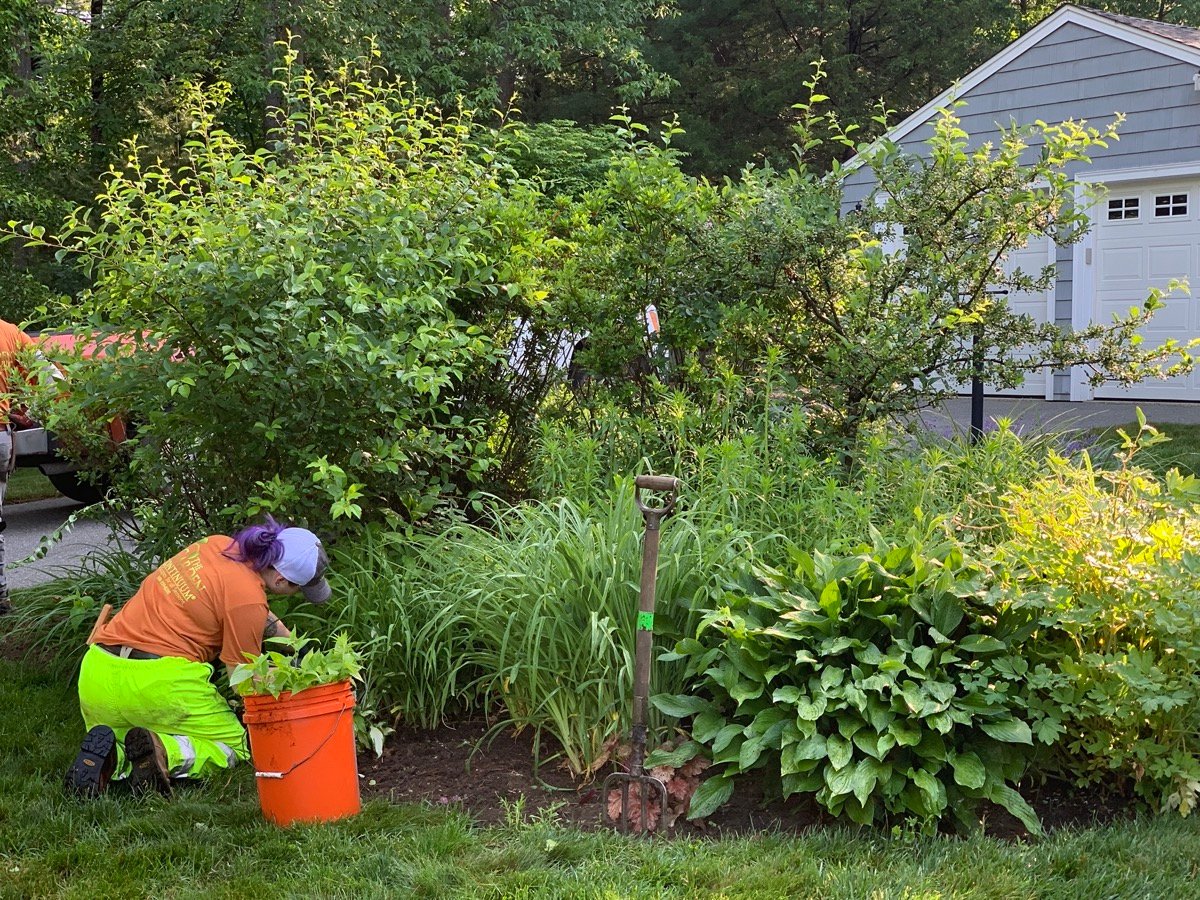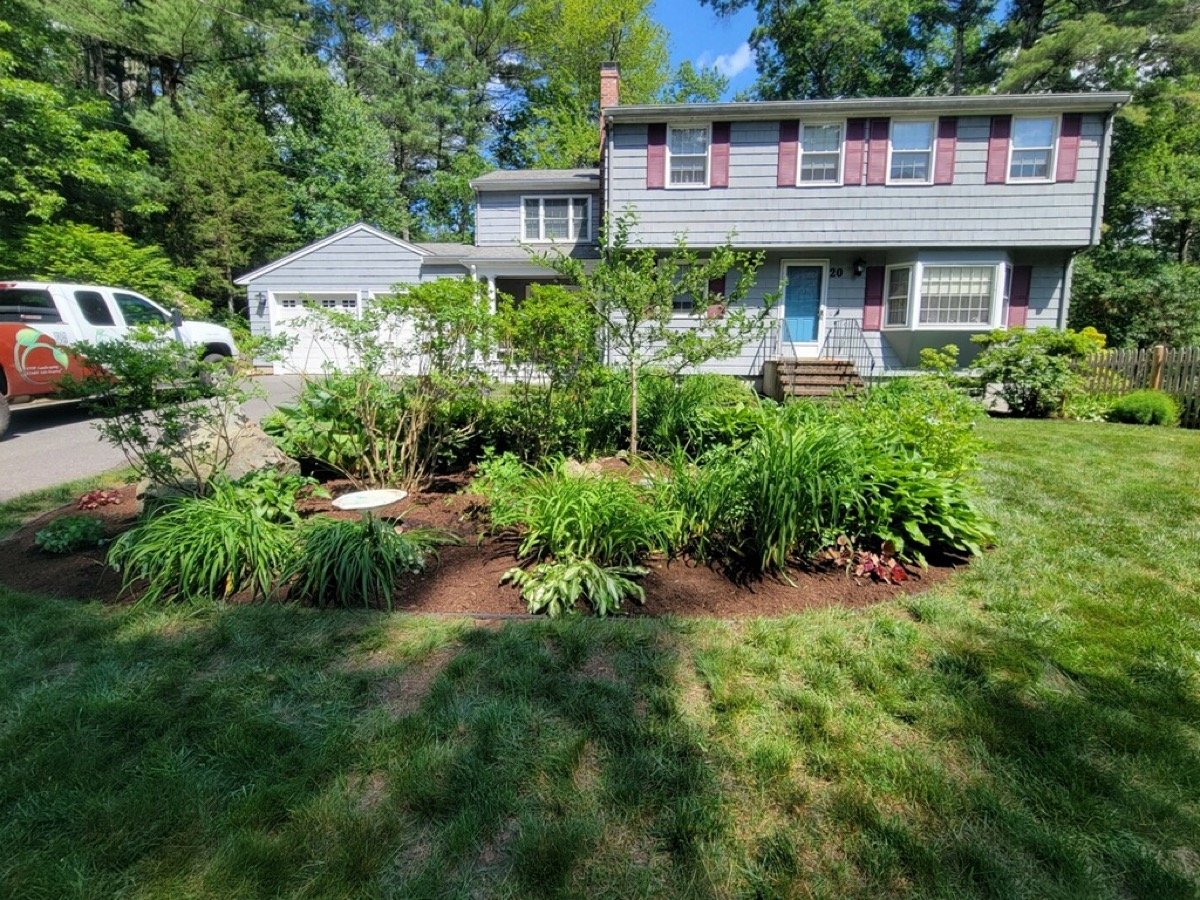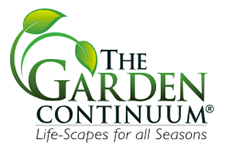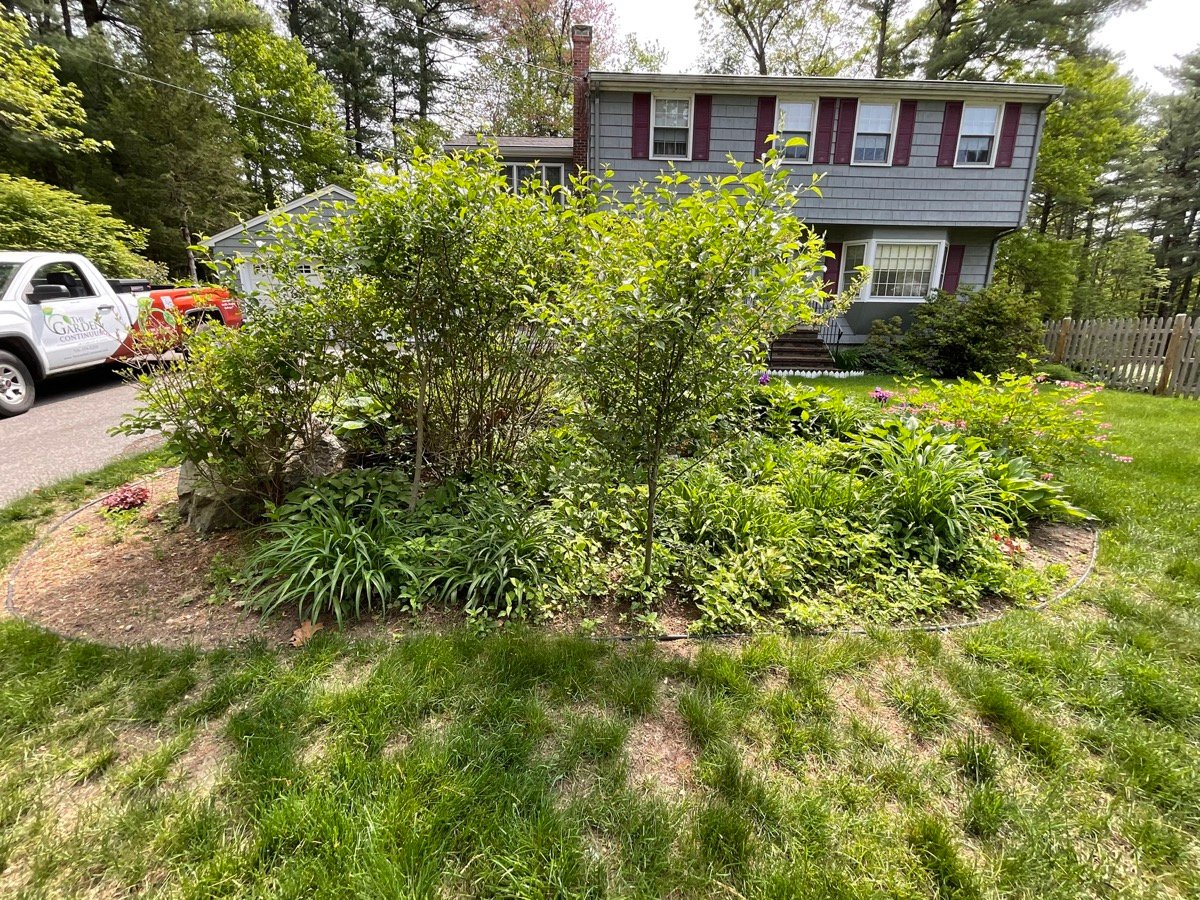You made a commitment to take care of your landscape, but life has its way of rearranging priorities. Maintaining your outdoor spaces can quickly take a back seat to everything else that’s cropping up around you.
Nature has her own agenda and any neglected space will quickly become her canvas. But before you beat yourself up over letting things get out of control, we have some advice. Why not take the middle road and figure out a way to get support? That way, you can go back to taking care of your landscape in a way that feels good to you.
In Monique’s case, she has two and a half acres to maintain. Granted, one acre is woods, but it still requires maintenance. She loves puttering and planting pots, but between her long perennial borders, the pond garden and the stroll garden, there’s not enough time in the day to keep up with all of the weeding, the mulching and everything else that comes along with having a beautiful yard. So even in her own garden, she welcomes outside help. She hires gardeners to come in and take care of some of the big bulk work so that she can focus every week on the areas she loves to work with most.
To make a long story short, even professional gardeners get outside help. So there’s nothing for you to feel embarrassed about. Promise.
Signs Your Garden Needs Rescuing: When to Call in the Professionals
The number one way to find out if you need a rescue is for you to observe what you’re feeling when you look at your landscape. If you feel overwhelmed and compelled to run away, it’s usually a good indicator that you’re going to need outside help to get you “out of the weeds (pun intended).”
Some other indicators are overcrowding, oversized plants, out of shape plants, aggressive weeds infiltrating desired plants or when you can’t tell one plant from the next.

TGC crews digging into find the desirable plants and remove the invaders.
Revamping Your Yard: Tackling the Transformation - All at Once or Bit by Bit?"
Rescues are not inexpensive because they often require some heavy lifting. One of the ways to mitigate cost is to choose a section of your landscape to rescue first. There’s no rule that says you have to rescue all areas at the same time. Monique always recommends prioritizing an area of high visibility or high impact that you will see as a victory every time you come and go from your house.
Oftentimes when the Garden Continuum is doing rescue work, they’re focusing on the areas you see driving in front of the house, driving into the driveway, and walking into the front entrance. Those tend to be popular areas for rescue. Another very popular area for rescue is around what Monique calls the backyard living space. For instance, a deck or a patio surrounding a pool. Basically, someplace where you’re spending a lot of your time. We focus on those areas first because they’re usually the places you want to go to calm your mind and your heart. The goal is to eliminate any angst you’re feeling about how messy it is so that you can really enjoy yourself.
Once those areas are fixed, you are more apt to live in those spaces. Can’t you just see yourself walking around with a cup of coffee, pulling a few weeds on a Saturday morning or coming home after work with an iced tea or a glass of wine and walking around planning what you’ll plant next.
That’s enjoyable. And, it’s a really nice way to unwind. You’re more inclined to maintain those areas as well if they have high visibility and they make you feel better.
Smart Budgeting Strategies for Your Garden Rescue: Creating a Financial Plan for Success
A full rescue could take a year or several years so you should plan on doing them incrementally.
For each area rescued, you should aim to carve out an operating budget to keep it maintained. The first 6 to18 months after a rescue are the most important because if the place was a mess for years, the weeds have been throwing seeds and may have deep roots. The rescue will get the bulk of those roots, but keep in mind, there are probably seeds queued up to take over. That’s why staying on top of weeding will eventually get you to the point of regaining equilibrium in the landscape.
The only caveat to this is once you rescue an area, be prepared to manage it so that you don’t need to be rescued again and again. That would be a waste of time, money and energy.

A loving husband’s wish to have his wife’s garden brought back to life is granted.
Embracing Help: Letting Go and Enlisting Professionals for a Successful Garden Rescue
To truly have a beautiful and comfortable lifescape we can’t trick ourselves into thinking that any garden exists without human touch. Most of us don’t want to live in the wild. And no matter how naturalistic your preferences are, the land is going to need tending.
In Monique’s book, “STOP Landscaping, START Life-Scaping,” she suggests making peace with your garden. To do this, start by asking yourself, “What can I do?”
For instance, I can’t climb to the tippy-top of trees and prune them, but I can mow the lawn. So the first step is to make that distinction of things you can and cannot do. Now you have to look at the “can do” bucket and really ask yourself, “What won’t I do?”
You have to juxtapose that against your current life and whittle down the list to the next level which is, “What can I schedule, and what am I going to accomplish on my own?” Anything you can’t accomplish on your own, you will outsource.
It’s a reality check exercise. You will find that there is a small sliver of landscape work you can achieve by yourself. And that’s what you have to focus on and then give yourself permission to let others do the rest. Over time, what you can do will grow, but by doing this, you will guard against having to be rescued again.
The Power of a Strategic Partner in Land Stewardship
On the subject, residential landscapes and gardens are not natural. They are constructs of human desire and creation using natural elements.
There is a continuum between wild order and formal order which is stylistic and preferential. Whatever your style is, there’s no right or wrong, but mother nature’s intention is to turn everything into a forest. Our job is to knock back the succession a bit to keep order so we can work with it in a great way.
That said, it makes no sense to get angry at nature for your garden getting weedy in the spring or to get flustered at your shrubs because the growth is crazy after it rains. Instead, make peace with it. Understand that nature is moving in a certain direction and when you become a property owner you have an obligation to be a partner with your little slice of nature. Understand that really good stewardship is often born through strategic partnership.
Call the Garden Continuum and witness the transformative potential of strategic partnership, as we guide you towards exceptional stewardship of your landscape.
If you are interested in regenerative gardening, please download our eBook: How Regenerative Gardening will help Fight Climate Change.






Leave a comment